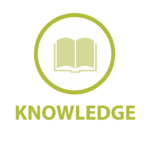
School Achievement Grade 3
Age 6-12 (School Age)
Note
*: Statistically unstable
Data not available:
School Year 2020-2021 CAASPP Smarter Balanced Mathematics and English Language Arts Test was not conducted.
The COVID-19 pandemic limited the number of students who participated in the English-Language Arts/Literacy testing for school year 2020–21. As a result, no San Diego County trend can be assessed due to limited student participation in 2020–21 and the suspension of testing in the school year 2019–20.
Race-Ethnicity categories:
Race-Ethnicity: Hispanic or Latino, White, Black or African American, Asian, AIAN: American Indian or Alaskan Native, NHPI: Native Hawaiian or Pacific Islander, Filipino, Multi-Race: Two or More Races
Sources:
California Department of Education (CDE), DataQuest http://data1.cde.ca.gov/dataquest/
California Assessment of Student Performance and Progress (CAASPP) http://caaspp.cde.ca.gov
CAASPP Smarter Balanced Mathematics and English Language Arts Test Results. (data retrieved: 2/12/2024; 4/9/2025)
What is the indicator?
This indicator – the percentage of students in grade 3 who have met or exceeded the state standards for English–Language Arts/Literacy—reflects reporting of Common Core Smarter Balanced test results. These data are reported annually by the California Department of Education.
Why is this important?
Achievement assessments are important tools for measuring students’ academic strengths and areas of improvement, thus helping students, teachers, and parents better understand the students’ academic needs. Teachers can use results to improve instruction based on the needs of their students. The data gathered from the formal assessments in the early grades provide teachers with information about individual students, as well as the class as a whole, which guides instruction in helping students gain proficiency across subject areas and assists students in being better prepared for future grades. School climate, parent involvement, socioeconomic disadvantage, teacher performance, and other factors affect school achievement.
What strategies can make a difference?
These evidence-based strategies are used across the country to increase school achievement:
- Encourage family engagement in reading, conversation, and singing with infants, toddlers, and preschoolers to enhance vocabulary and language development.
- Provide thorough English-language arts instruction, emphasizing its importance, especially in grades K, 1, and 2. This includes phonics-based teaching, word/language study, small group lessons, and utilization of engaging and pertinent reading materials.
- Encourage reading across the curriculum in schools (e.g., story problems in math)
- Limit screen time, including computers, television, and video games, with the goal of eliminating screen exposure for children under the age of 2.
- Utilize teaching methods that are culturally and linguistically sensitive, creating chances for students to express their cultural backgrounds and individual experiences.